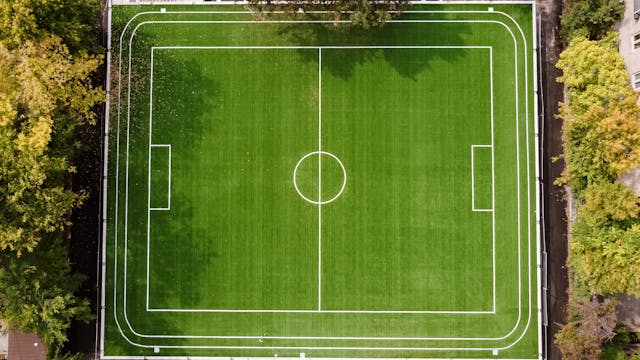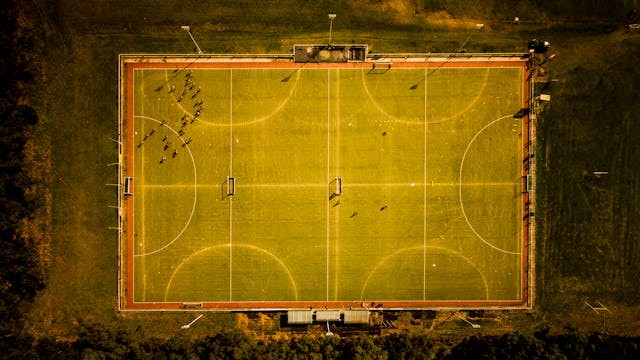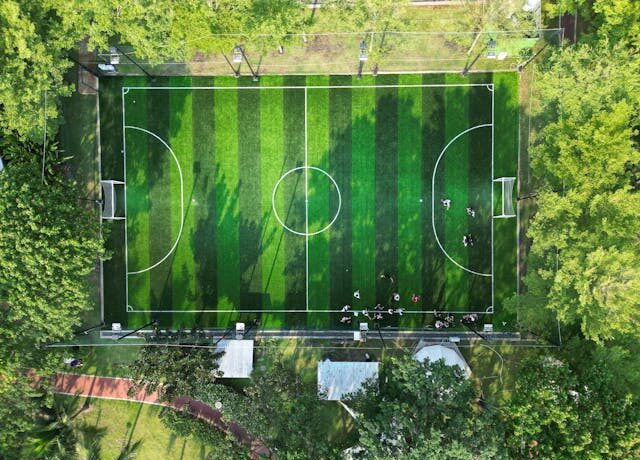Sports fields are basically community assets that may hold all of school competitions and pro matches. However, maintenance of these fields in conditions fit for playing is not an easy task, especially when keeping up with drainage issues. In Australia, when weather phenoms can change very quickly from dry spells to heavy rains, it is absolutely necessary that field drainage be made properly. Poor drainage affects all good playing and damages the turf, thus causing soil erosion and making the cost of maintenance cover all the time. Water logging normally occurs due to heavy rainfall, which groundskeepers have to counter very often. When the soil cannot permeate the water through itself, the water accumulates on the ground forming puddles or muddy land that hampers the movement of players and may lead to match cancellations. In many instances, waterlogging occurs due to an unfit soil structure or the absence of an adequate drainage setup beneath the turf. If the latter is the case, then an improvement in sports ground drainage can work wonders for enhancing the field’s performance. Installation of sub-surface drains can allow for the easy gliding away of excess water from the surface. Such infrastructure can include slotted pipes surrounded by gravel. Aeration is also important to prevent soil from becoming compact, keeping the soil porous and enabling rainwater infiltration.

Waterlogging and Poor Soil Permeability
The biggest headaches sports field managers have to deal with are waterlogging. It might be because there is a compacted soil layer that prevents water from percolating and thus sits in the root zone. In Australia with its various climates and soils-soil types in the humid coastal regions respond to moisture differently than maybe the drier inland areas-have their own way of dealing with moisture. For instance, clay soils with their very fine particle structure tend to keep water, whereas sandy soils dry water away very soon. It is in between such extremes that proper soil management along with right choice of turf grass is required. Alongside soil amendments, other important methods could be verti-draining or coring. These open up soil that is compacted and offer pathways for water to travel down. Also, establishing levels of surface that do not allow water to accumulate in depressions is good. For community sports grounds, particularly those used all year round, sticking to maintenance claims huge improvements for preventing waterlogging problems from recurring.
Compaction and its Impact on Drainage
Another probable problem arises in favor of good drainage on the grounds. Compaction is induced by repeated traffic exerted by players’ foot falling compressive forces on soil particles, with such weather conditions sucking air spaces out; with irregular alignment of soil particles, even maintenance equipment and vehicles would cause the same. Such packed soils become impervious and greatly impede the development of roots, thereby creating weak patches of turf. These spots then suffer wear-and-tear in actually heavy traffic areas, be it mouths of goals or center. The groundsmen attempt to counter compactness by using mechanical methods of aeration. Hollow-tine aeration pulls tiny plugs of soil into the air, while, by Deep-tine aeration, one may improve soil conditions much deeper that drainage and root development are better. Another important consideration is the timing of aeration: if done in the growing season, the turf soon packs up and fills the holes.
Poor Runoff Management and Surface Grading
Even if you can have a subsurface drainage system, a deficient runoff management system can always create problems. Rainwater may collect in a certain location if the field has not been properly graded rather than flowing evenly down the surface. Irregular runoff means locals suffer flooding, erosion, and turf damage. Australian sports fields, especially those that are constructed on flat or low-lying ground, face this dilemma after a heavy storm. Usually, to control runoff, the improvement of surface grading is the single most effective means. With a slight crown running down the middle of the field of about one to two percent slope, the water is made to flow toward the sides of the field where it can naturally drain away. This keeps the playing surface relatively dry in most wet weather conditions, along with the very competent drainage system provided around the half-a-metre width around the field. It is equally important that car parks and spectator areas should be drained such that water does not flow onto the field but away from it.

Maintenance Practices and Seasonal Challenges
Australian sports fields are subjected to very interesting seasonal processes that interfere with the efficiency and performance of drainage. In the winter, colder temperatures with lower evaporation rates can keep the water from infiltration, while in summer, strong storms bring downpours that can fill the drainage systems fast. Therefore, regular inspections and maintenance must take course before apparent drainage problems from time to time.Sand topdressing, along with regular aeration, builds drainage capacity while fostering root growth and smoothing playing areas. Other terms of soil amendments can sometimes be applied to retain moisture through dry weather, yet promote efficient drainage when rains come. Selection of turf can be important; species like couch grass or kikuyu, which are typically used on Australian sports grounds, have very tough roots that can handle fluctuating moisture states.
Integrating Drainage Solutions into Field Design
Drainage specialized for the sports field construction kind prevents grave problems in the long run if you can look into it from the time of construction. Its drainage is planned well with considerations for local soil, rainfall, and frequency of usage in the design stage. They offer protection surface drainage and subsurface drainage in regions that undergo feverish heavy rains. The surface drains carry the water off fairly quickly, whereas the subsurface drains act to draw water away when the moisture has infiltrated deeper into the soil.





